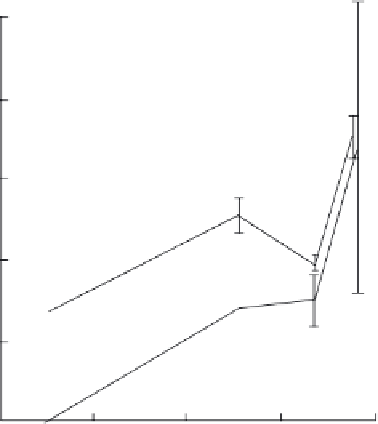Environmental Engineering Reference
In-Depth Information
10
Annealed
Zircaloy-2
F
L
= 0.1
25% cold-worked
Zircaloy-2
8
6
4
2
300
400
500
600
700
Temperature (K)
4.66
Temperature dependence of growth in Zircaloy-2 at high fl uence
(Rogerson, 1988).
curve) steadily increases with increasing temperature. Also, as indicated
in Fig. 4.65, the fl uence at which growth breakaway occurs gets smaller
as temperature increases. Also note in Fig. 4.66 (Rogerson, 1988) that at
temperatures above about 360°C (633K) the growth rate is the same for
recrystallized (RXA) and cold worked (SRA or CWSRA) materials.
Temperature effect information is given by Gilbon & Simonot (1994)
and Gilbon
et al
. ( 2000 ) and confi rms that growth dramatically increases
between the temperatures 350°C and 400°C (623-673K). Gilbon
et al
. ( 2000 )
also give data showing that growth of the M5 alloy at 5 × 10
25
n/m
2
decreases
from 0.08% at 280°C (553K) to 0.04% at 350°C (623K).
The effect of temperature on growth rates of cold-worked Zr-2.5Nb is
given by Holt
et al
. (2000). In the range of interest for CANDU reactors,
that is 290-317°C (563-590K), the growth rate decreases with increasing
temperature at high or low fl uences. This is slightly different and opposite
to that observed for Zircaloy, but the range of temperature data available is
smaller than for Zircaloy.
The practical implications of the discussed temperature dependence
should be clear. For BWRs and CANDUs variations in growth should be
small and predictable, at least for the alloys currently used, and for PWRs
variation may be large and, particularly above about 350°C (623K), may be
unpredictable with our current state of knowledge.










Search WWH ::

Custom Search